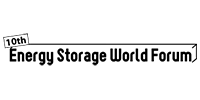 A new report into energy storage commissioned by chief scientist Alan Finkel highlights the enormous opportunities for storage in Australia, but underlines how little is actually needed over the short to medium term, even at relatively high levels of wind and solar.
A new report into energy storage commissioned by chief scientist Alan Finkel highlights the enormous opportunities for storage in Australia, but underlines how little is actually needed over the short to medium term, even at relatively high levels of wind and solar.
The report, The role of Energy Storage in Australia’s Future Energy Supply Mix, funded by Finkel’s office and the Australian Council of Learned Academies (ACOLA), says the required investment in energy security and reliability over the next 5-10 years will be minimal (see graph above), even if wind and solar deployment moves far beyond levels contemplated by the Energy Security Board.
The contrast with the ESB modelling – and the attempts by Coalition parties at state and federal level to dismiss high levels of renewable energy as “reckless’ – could not be more pronounced.
While the ESB, in arguing for a National Energy Guarantee, speaks of the system threats and urgency to act with a level of “variable” renewables accounting for between 18 and 24 per cent of total generation, this new report says surprising little storage may be needed with 35 per cent to 50 per cent wind and solar.
Even in the 50 per cent variable renewable energy scenario – more than double that contemplated at the high end by the ESB – the new report suggests enough battery storage may be available “behind the meter” – households and businesses – to meet the storage needs.
“The modelling provides reassurance that both reliability and security requirements may be met with readily available technologies,” it says.
“Nationally and regionally, the electricity system can reach penetrations of renewable energy close to 50 per cent without significant requirements for energy reliability storage.
“Reliability problems, such as those that recently occurred in South Australia and New South Wales, can be responded to quickly and effectively with appropriate storage.”
In one of the most detailed reports into energy storage, the authors point to the huge potential of battery and energy storage in Australia – both in core mineral resources, manufacturing of battery storage, R&D, deployment, and even renewable hydrogen.
At the same time, the report also warns that Australia needs to develop a recycling strategy for battery storage, and also needs to take into account other social aspects, such as the origins of lithium and cobalt.
Click Here to Read Full Article
read more
 There’s no question wind and solar energy are now competitive with fossil fuels around the world on a per-kilowatt-hour basis, but they still face the challenge that they’re intermittent sources of energy. The sun won’t provide energy to make electricity at night and wind turbines only generate electricity about half the time, at best. For now, natural gas or another fossil fuel is needed to fill in any gaps in electricity supply.
There’s no question wind and solar energy are now competitive with fossil fuels around the world on a per-kilowatt-hour basis, but they still face the challenge that they’re intermittent sources of energy. The sun won’t provide energy to make electricity at night and wind turbines only generate electricity about half the time, at best. For now, natural gas or another fossil fuel is needed to fill in any gaps in electricity supply. There are plenty of mixed messages and political pitfalls in today’s report into energy storage that has been ticked off by Chief Scientist Alan Finkel.
There are plenty of mixed messages and political pitfalls in today’s report into energy storage that has been ticked off by Chief Scientist Alan Finkel. Although electrical energy storage is considered the missing link between majority-renewable grids and consistent, sustainable power, the sector is being held back by a lack of standardisation. Clear, wide-ranging standards, in addition to a regulatory environment that recognises the significance of energy storage, are sorely needed.
Although electrical energy storage is considered the missing link between majority-renewable grids and consistent, sustainable power, the sector is being held back by a lack of standardisation. Clear, wide-ranging standards, in addition to a regulatory environment that recognises the significance of energy storage, are sorely needed. Intended to “kick start concrete projects”, the European Commission is set to allocate a further €200 million (US$235.53 million) towards supporting the scale-up of lithium battery manufacturing on the continent.
Intended to “kick start concrete projects”, the European Commission is set to allocate a further €200 million (US$235.53 million) towards supporting the scale-up of lithium battery manufacturing on the continent. Penn State
Penn State  AUSTIN, TX and BERLIN, GERMANY–(Marketwired – Nov 16, 2017) – Younicos has completed the installation and commissioning of an upgraded 3 MW battery-based energy storage system on Kodiak Island, Alaska. The company replaced previously deployed lead-acid systems with advanced lithium-ion batteries, significantly extending the resource’s operational lifetime and enhancing performance and reliability.
AUSTIN, TX and BERLIN, GERMANY–(Marketwired – Nov 16, 2017) – Younicos has completed the installation and commissioning of an upgraded 3 MW battery-based energy storage system on Kodiak Island, Alaska. The company replaced previously deployed lead-acid systems with advanced lithium-ion batteries, significantly extending the resource’s operational lifetime and enhancing performance and reliability. The expected outcome of utility integrated resource planning (IRP) is the optimum combination of power generation resources that will produce the most cost-effective and reliable generation for the rate-payer. That process is relatively simple for a nuclear and fossil fuel-based system. However, the difficult process of integrating renewable generation has made asset optimization and operational flexibility paramount.
The expected outcome of utility integrated resource planning (IRP) is the optimum combination of power generation resources that will produce the most cost-effective and reliable generation for the rate-payer. That process is relatively simple for a nuclear and fossil fuel-based system. However, the difficult process of integrating renewable generation has made asset optimization and operational flexibility paramount.



